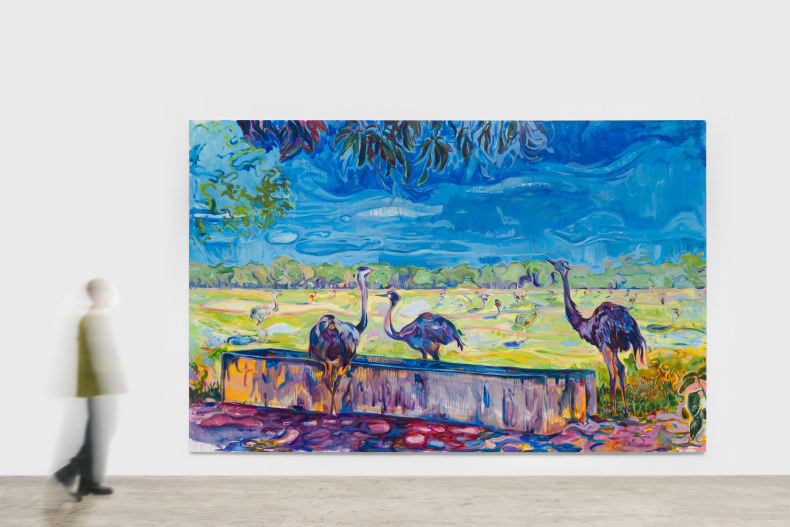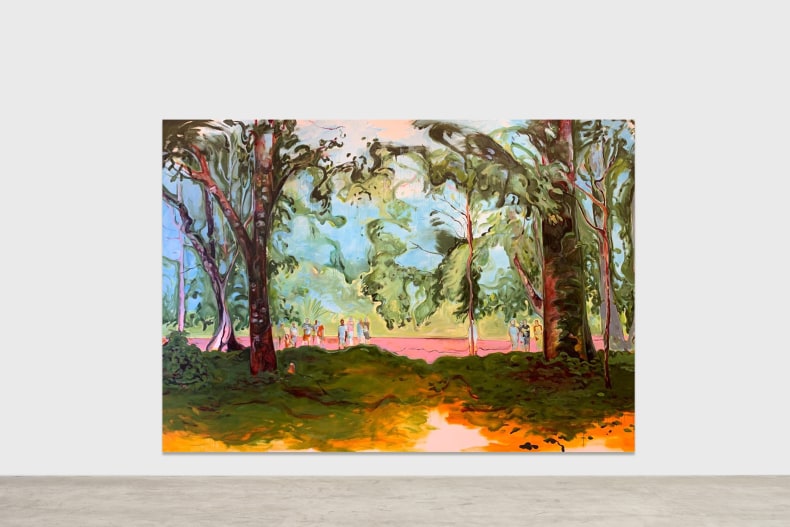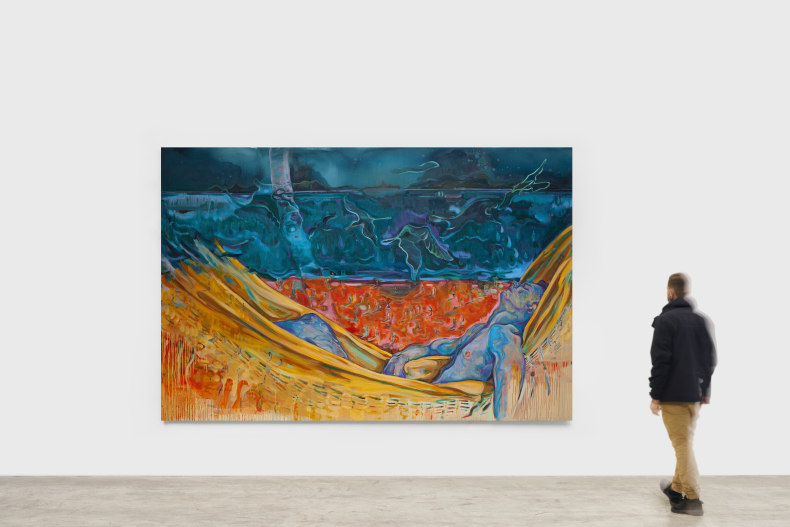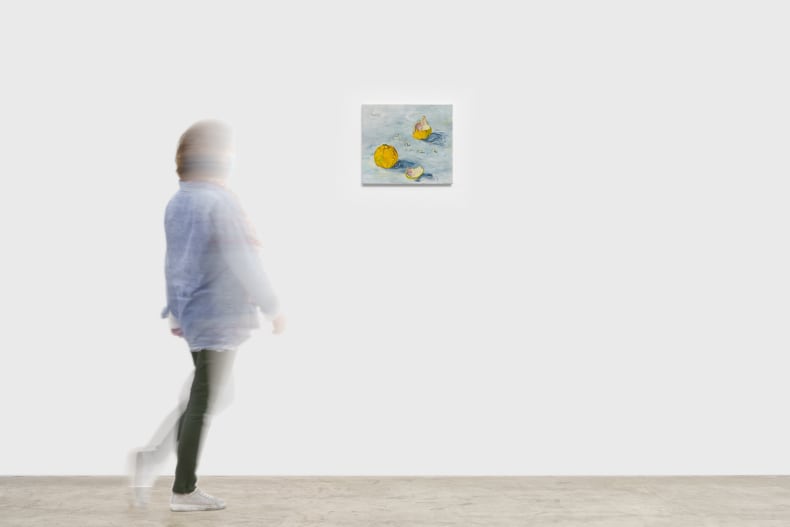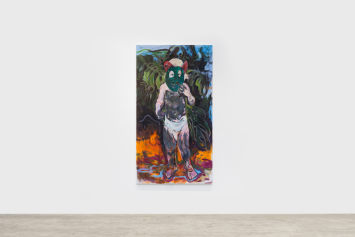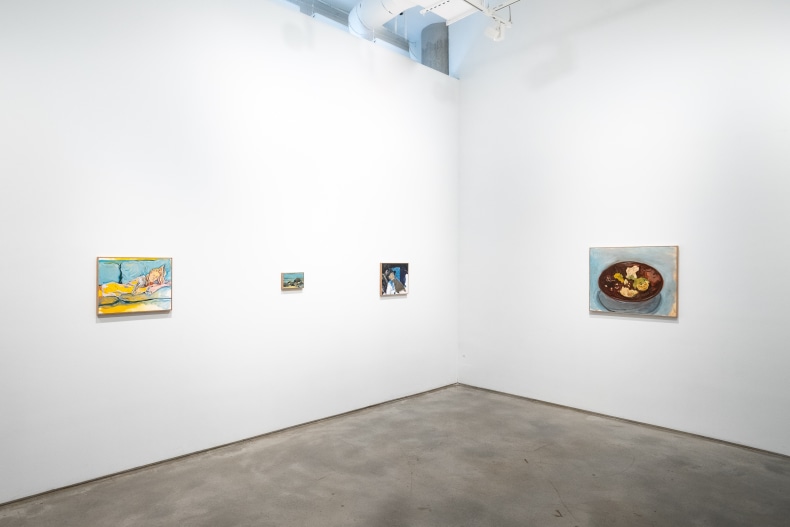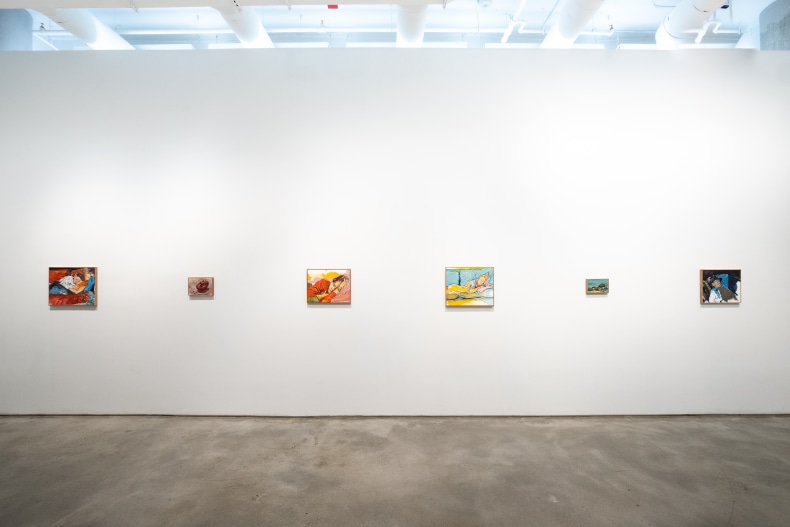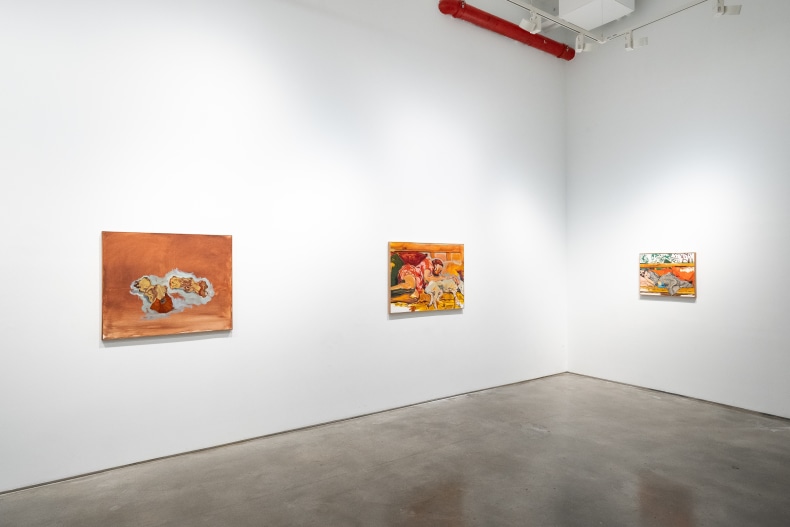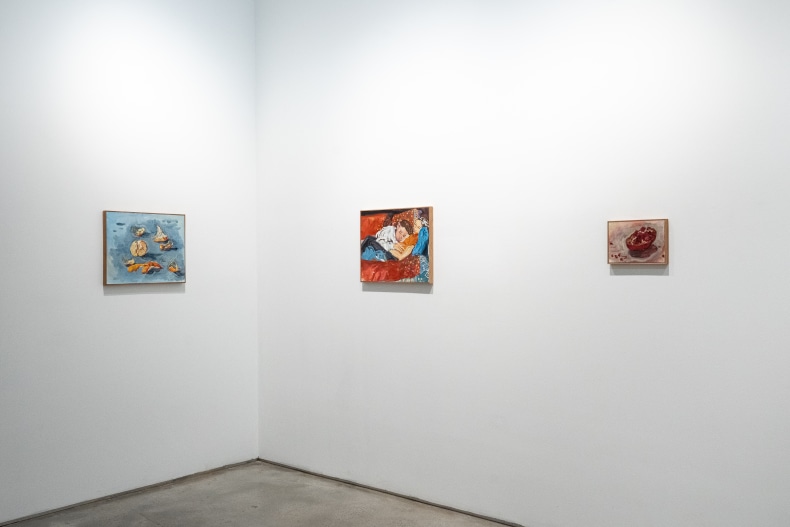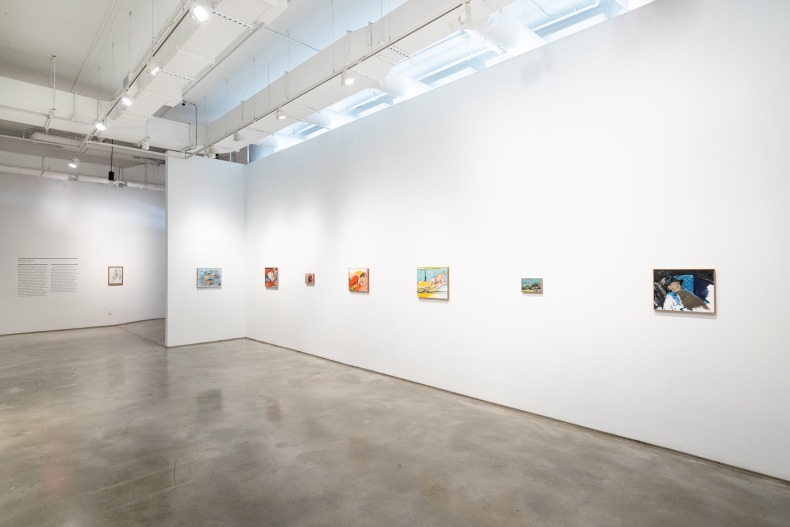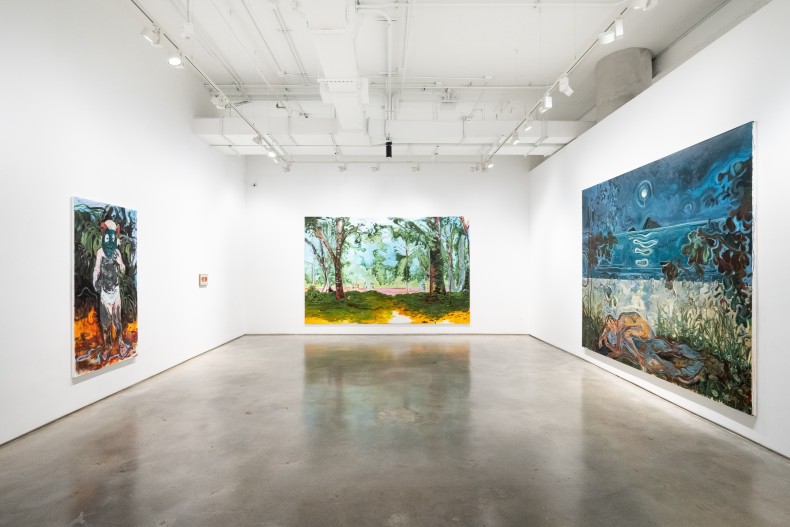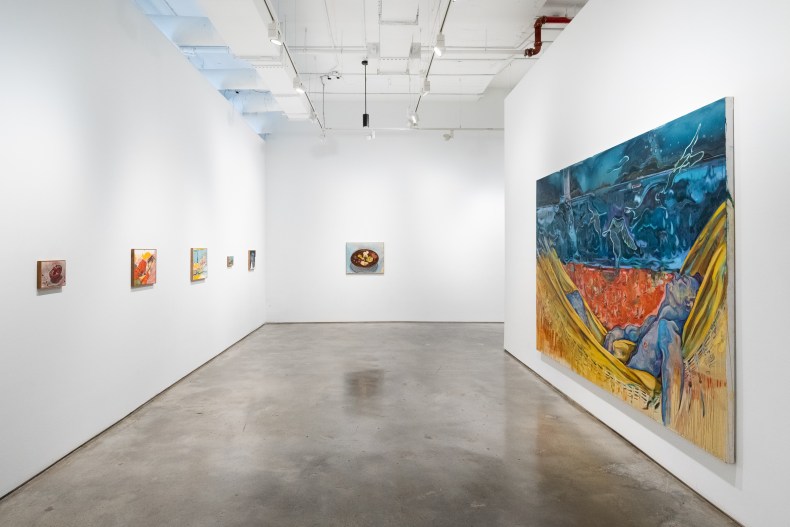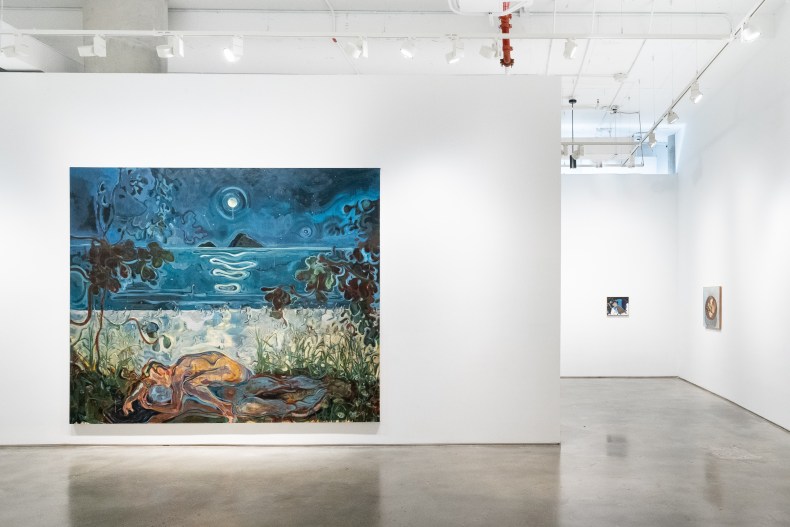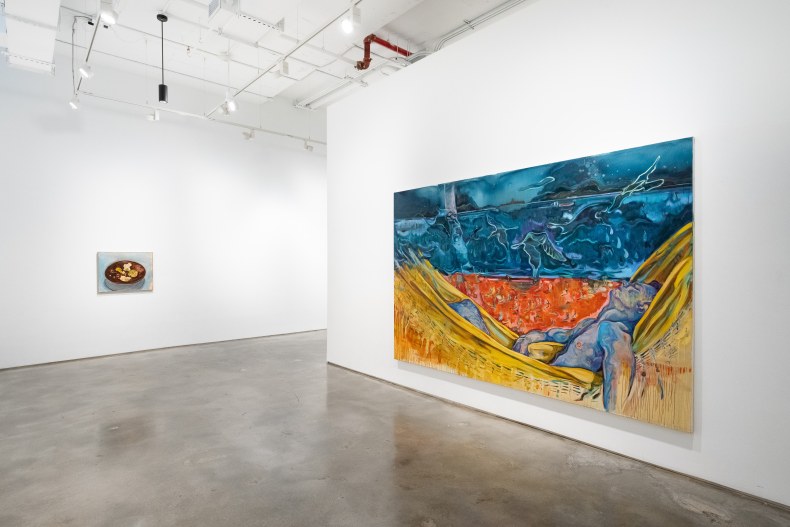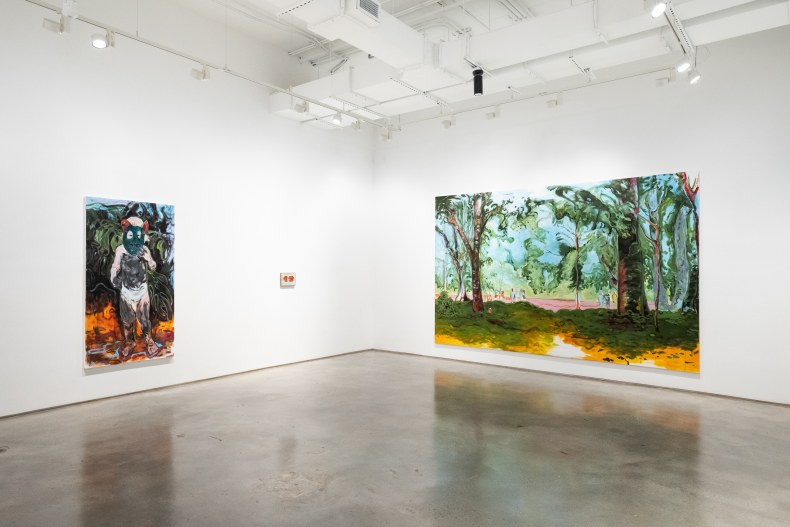Nara Roesler New York is pleased to present Maria Klabin: Liquid Air, the first solo show by Brazilian artist Maria Klabin to be held in the United States. Curated by Luis Pérez-Oramas, the show introduces Klabin's work to the North American public, presenting the work of an artist who produces a pictorial language that is at once imaginative, dreamlike, and unusual, as well as realistic and quotidian. The exhibition is open to the public between September 7 and October 15, 2022.
The holding of Maria Klabin's first international solo show in New York is a celebration of her own trajectory. In the late 1990s, the artist moved to the city to further her studies in photography. Soon after, she joined the Art Students League of New York and followed her long term interest in painting by delving into the study of pictorial language. In 2002, Klabin completed her studies and received her master's degree from Central Saint Martins, in London, UK.
The works exhibited in Liquid Air reveal painting as an unfolding of the artist's practice in other fields, such as dance, which she has practiced since childhood, sculpture, developed in her youth, and photography. Exemplary, in this sense, are the large-scale landscape paintings that make up the show. Often, the artist uses an image photographed by herself as the starting point from which to develop her work on the canvas.
Klabin finds in the photos visual pretexts that lead her to creating her own image. She begins with the movements of her body, drawing, with the brush, a choreography over the surface of the canvas. The physical attraction to the material is a manifest presence in Klabin's work, modeling the paint on the canvas to create figurations through the encounter between two bodies, hers and the painting's.
Curator Luis Pérez-Oramas sees the origin of the artist's work in the body, noting that “Maria Klabin relates her decision to become a painter to her experience as a dancer. Dance – the body in movement, the body in space – is, therefore, involved in her practice, which, paradoxically, began in three-dimensional modeling.”
For the artist, painting is an answer to a question that she does not yet know how to formulate. “I have the feeling that painting knows more about me than I do about it”, says Maria Klabin about her creative process. It all starts with a gesture, a mark that she makes on the canvas with her brush, a call and response, as each mark proposes a challenge, a question which needs an answer, through another brushstroke and another gesture, ultimately leading to a resolution and the creation of the final, dreamlike image.
Another group of works presented in Liquid Air comes from research focused on observation, where the artist portrays everyday scenes on smaller canvases. During the pandemic, this production peaked as Klabin took isolation times as an opportunity to return to one of the key themes in her repertoire: portraiture. In 2017, the artist had already returned to the practice, painting people she was close to. One day, the model fell asleep during a session, which opened the way for Klabin to focus not only on the individuality of the subject, but on the relationships between them and the space, transforming the scene into a kind of domestic landscape.
In Liquid Air, Klabin presents a series of paintings in which she has developed these portraits of sleeping individuals in greater depth, presenting them alongside paintings of still lifes, scenes of silence, as well as those of drowsiness, in which the painting – although remaining objective – finds a sense of freedom.
In particular, it stands out how the two most usual scales, the intimate and the monumental, make it possible to establish different relationships between matter and representation, both in their making and in their fruition. According to Oramas, “her impressive paintings are true repositories of the trace of the gesture, of the density of the oil paint, of her broad, ambitious, fluid and liquid brushstrokes, behaving as the architectural structuring of her compositions.”
Most often chosing intimate and monumental scales for her paintings, the artist establishes different relationships between matter and representation, both in their making and in their fruition. According to Oramas, “her impressive paintings are true repositories of the trace of the gesture, of the density of the oil paint, of her broad, ambitious, fluid and liquid brushstrokes, behaving as the architectural structuring of her compositions.”

